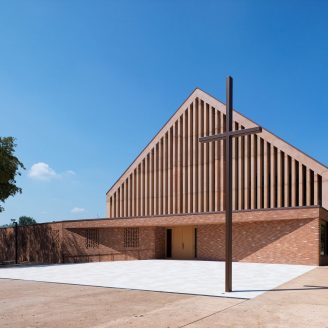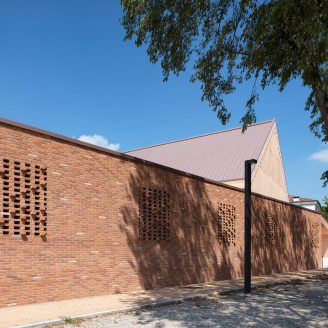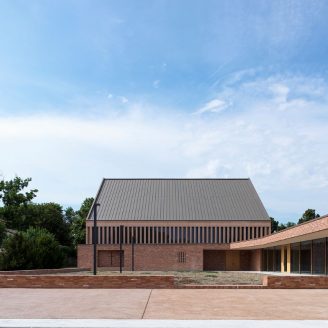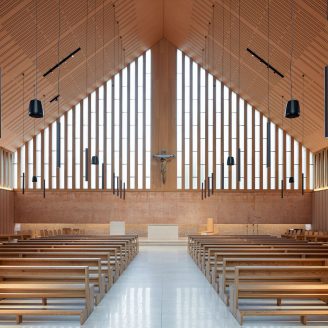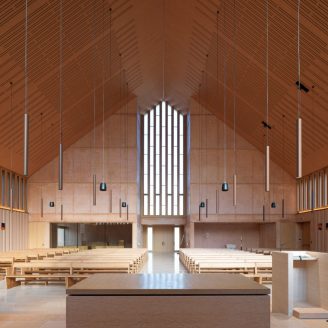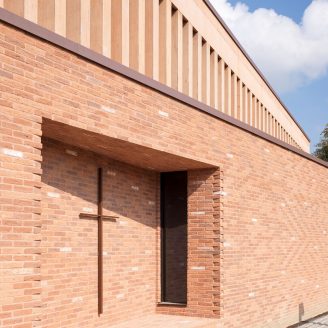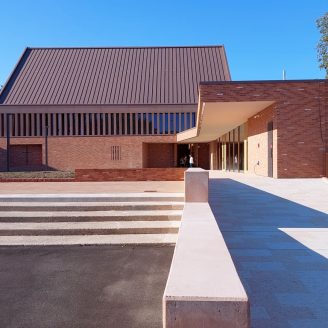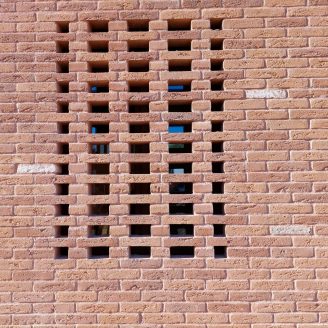In Pegognaga, near Mantua, LR Architetti studio designed the new Church of the Holy Spirit, which replaces the previous parish church, damaged by the 2012 earthquake.
The project ensures a proper scale and orientation in the historic small city and the new building occupies the lot through a wall from which the gabled volume of the hall emerges.
The parish hall is a free central space. Dense, slender terracotta-colored concrete pillars and full-height windows run on the perimeter. Two rows of suspended tubular light fixtures mark the inner space.
The main facade extends on one side into a low building with a flat roof. This basement volume encloses the parish hall and other rooms for parish activities. It is clad in brick in varying tones from red to cocciopesto. Concrete acoustic panels with vertical grooves line the basement level inside.
A “carpet” of pinkish Lessinia stone, rough on the front court and polished in the interior, unifies the exterior pavement and the hall floor. The same marble characterized the liturgical furniture. The new design of the table and tabernacle integrates spoils from the old parish church.
On the back of the chancel stands the mosaic Earth as a symbol of “rebirth-resurrection.” It is set back from the upper pillars and lit by a hidden skylight. The used materials are brick fragments from the demolished church and gold tiles. They are assembled on a sloping wall using the opus scutulatum technique.
Ground excavations uncovered a complex stratigraphy of ancient worship structures. Three portions are visible through slots cut into the floor. They will be opened on special occasions, showing the direct dialogue between the present and past.
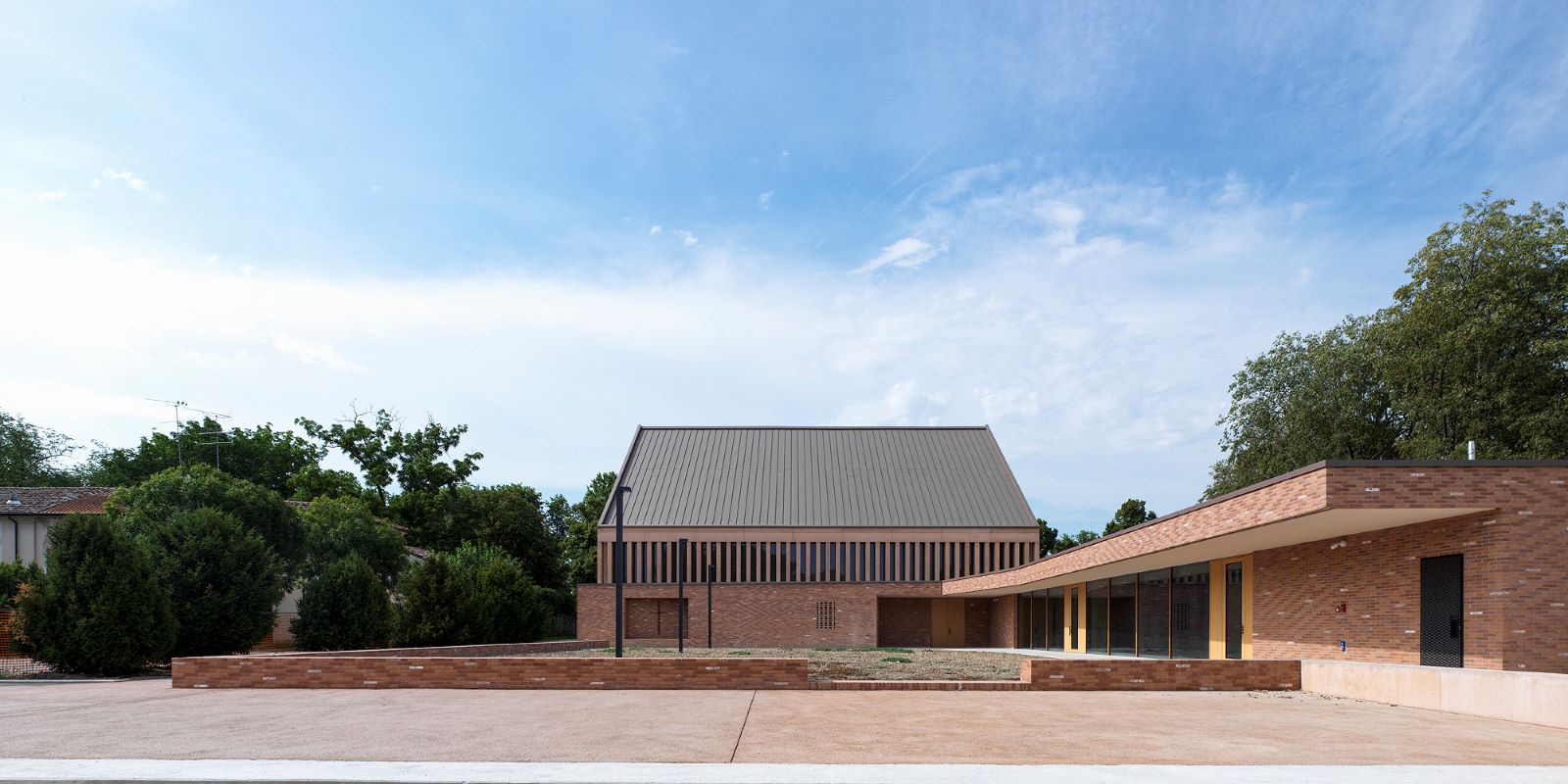
The key role of brick
The basement that encloses the church and ancillary rooms is clad externally in “handmade type” soft-paste bricks produced by Terreal Italia. For those observing it from the street front, the effect is that of a boundary wall that, in continuity with the neighboring 17th-century villa, follows the course of the street front. A 50-50 mixture of bricks from the Terrae line color Rosato and color Rosso Forte and bricks from the Dogi SanMarco line color 2.0 Rosso Forte in sizes 12x25x5.5 cm (40,992) and in the corresponding laths (2900) with a thickness of 2 cm was chosen for the colors.
From a technological point of view, the external terracotta cladding was secured to the load-bearing wall by means of the Terreal Italia Safe Wall System.


